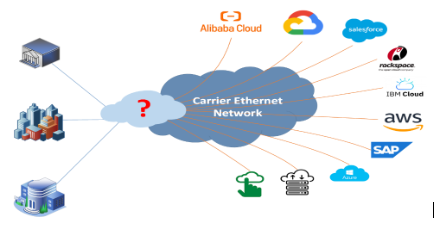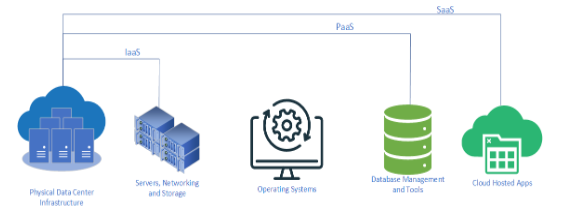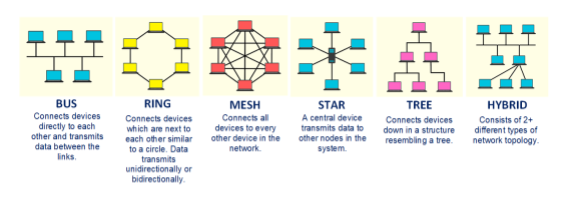Businesses and governmental agencies from all vertical markets are migrating from enterprise to the cloud for applications, computing horsepower and flexibility for expansion and contraction which the cloud platforms offer. Recently, the reduction of capital budgets for government and enterprise customers along with the lower costs of the cloud is speeding up cloud adoption. These cloud solutions
are everything from mission critical to application development, therefore must allow for all aspects of security, efficiency and scalability. BUT – these applications only produce results if they can be reached with 100% uptime and with adequate capacity. To truly achieve a more bullet proof design, organizations need to first understand the basic elements of a successful and resilient end-to-end IT environment. Once these different elements are understood, then it is a matter of designing, negotiating and implementing them.
As an overview, the below diagram shows the high-level aspect of the problem and these major elements of the end-to-end environment.
Let’s Look at Some Basics
Key questions should stay at the forefront during this discussion:
- What if you suddenly couldn't access your 'X'aaS because your network connectivity isn't redundant?
- What if the access to these tools is too slow to carry out staff jobs on a daily basis?
- What if a failure in the WANs proves to show that the WANs are interdependent and the failure results in a domino effect of outages?
Understanding Cloud Service Models
Simply put, cloud computing is the access to technology services and falls into three major buckets: software, platforms and infrastructure over networks.
These three main models of cloud services include:
- Software as a Service (Saas) - access to software online without having to purchase, install and maintain it and the associated hardware and operating systems within the enterprise data centers. A few examples include Microsoft Office 365, Salesforce, Google Workspace, etc.
- Platform as a Service (PaaS) - application development and deployment environment in the cloud. A few examples include Microsoft Azure, Salesforce Lightning, SAP Cloud, etc.
- Infrastructure as a Service (IaaS) - readily available IT infrastructure (physical or virtual) for servers and data center environments. A few examples include AWS, Cisco Metacloud, DigitalOcean, Rackspace, Google Compute Engine, etc.
Examples of these three main models of cloud service are depicted in the diagram below and show the three major cloud models and their reach within the cloud infrastructure categories.
Cloud & WAN Redundancy
The major cloud providers are heavily resilient for all major aspects which are inherent in a hardened data center, but what about your organization’s connectivity to the cloud? What is your organization’s connectivity beyond the firewalls?
- Is your organization multi-location and if so, across multiple states or within a single state or county?
- Is your organization multi-location and also multi-national?
- Do you own fiber which connects sites within your organization?
- What natural disasters are your sites located in and subject to?
These elements are where WAN becomes the most important topic of discussion as the weakest link in the chain.
No two networks are designed and built the same; one organization might have drastically different network deployment goals from another. The one common aspect of all designs is the three pillars of reliability, security and speed of the connectivity. This is why the technology design professionals must tailor each system to meet the needs of the organization and their goals while meeting the three pillars of all good designs. That said, best in class-networking technologies come with their own limitations, so technology professionals must build networks based on how the equipment operates.
Network Topology Defined
Below is a diagram which clearly diagrams the major types of network topology; all are still seen and used in networks to this day. These network topologies exist not only within an organization but also within the WAN depending on the type of WAN Carrier platform.
Do you know what network topology your organization has? Do you know if it is designed to fit your current needs or is it time to modify the network topology as part of a cloud WAN hardening initiative? Is your organization preparing to expand the cloud aspects beyond its current environment of SaaS, PaaS or IaaS and if so, this is the time to enhance the WAN connectivity due to increased dependency of the cloud connectivity?
Know your WAN infrastructures
The initial steps of having a more bulletproof cloud connectivity is to truly understand what your current WAN is for all sites. Once this is fully vetted and documented, then you can move on to the next step of determining which WAN services best produce the highest levels of continuity, speed and security.
Here is a list of partial elements of WAN redundancy to consider:
- Geo-redundancy, what do we mean by this? What are all elements of this: o Leaving the client facility via different entrances - MPOP/APOP
- Once it hits the streets (outside copper and fiber plant diversity)
- Placement and resiliency of the Fiber Huts and NIUs (Network Interface Units)
- Dependency on the electrical power grid and protection where needed for the weakest links of the power grid in the telco outside plant
- Carrier Diversity - it is not what you think it is, many times the carriers all travel in conduits which are right next to each other. One train derailment takes them all out:
- Impact of the mergers of the carriers and which carrier network platform will be the moving forward network in each given carrier that has experienced a merger
- Telco Hubs – locations and history of power-impacting events, what is the stability of a given electrical substation impacting your site and carriers?
- Aerial verses underground cabling
- Small Cell/Carrier Wi-Fi/Satellite/Microwave
- Carrier Quality – which tier of carrier are you betting the business on?
- Which level of service are you on for each carrier? (SLA and QoS)
- Tier One carriers are recommended for your mission critical cloud connections
This is only a partial list of a full continuity design.
Conduct Emergency Drills at least twice a year
When is the last time you pulled the plug on one of the redundant WAN carriers to see if it truly failed over or continued to operate if in a High Availability design? You would of course do this in a
maintenance window but is this done? Do you track the results and correct failures and weaknesses which appear?
On the business side of the WAN connectivity issues, a key set of questions are:
- What staff and services could continue to produce with a loss of connectivity to the cloud?
- What amount of money is tied to SLAs to your clients and if there were a WAN outage, would you owe money to the clients? This is frequently the case with certain verticals such as advertising.
The above is only a high-level outline for an overall effective design needed to keep your cloud connectivity resilient. As your design becomes more and more complete, don’t forget that it should be constantly updated and verified.













